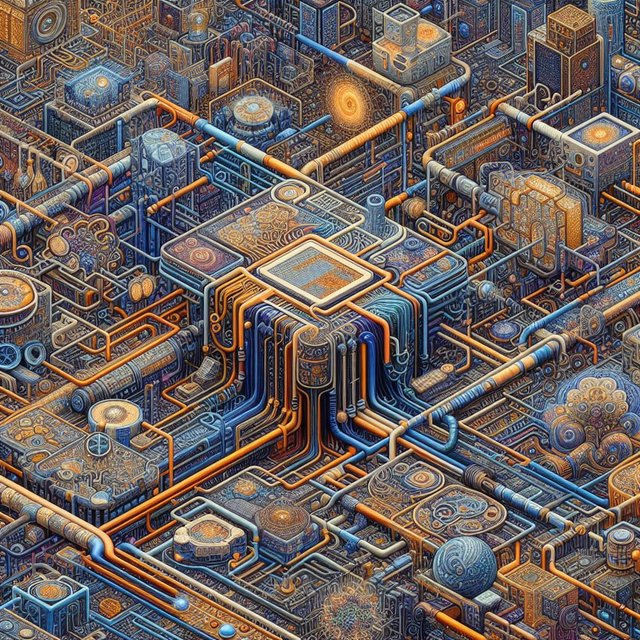The internet, a boundless ocean of information, connects us across continents and cultures, fuels innovation, and shapes our daily lives in ways unimaginable just decades ago. Yet, this vast digital landscape rests upon a complex foundation of services, connections, and limitations that deserve closer examination. From the intricate dance of data packets to the physical infrastructure that underpins it all, this article delves into the fascinating world of the internet, dissecting its components and exploring the challenges that remain.
Services: The Building Blocks of the Online World
The internet isn't a single entity, but rather a vibrant ecosystem of diverse services that cater to our varied needs. These services can be broadly categorized as:
Access Services: These are the gateways to the internet, providing the pipes through which data flows. Common access services include fiber-optic, cable, DSL, satellite, and mobile broadband, each offering varying levels of speed, reliability, and affordability.
Content Services: This vast category encompasses websites, social media platforms, streaming services, online games, and countless others. These platforms host and distribute the content that fuels our digital interactions and entertainment.
Communication Services: From email and instant messaging to video conferencing and online collaboration tools, communication services bridge the gap between individuals and communities across the globe.
Transaction Services: Online shopping, banking, and financial management have become commonplace, thanks to transaction services that enable secure and convenient online commerce.
Connections: Weaving the Fabric of the Digital Realm
The services we rely on wouldn't be possible without the intricate network infrastructure that connects us. This infrastructure includes:
Backbones: These high-capacity data highways carry the bulk of internet traffic between continents and major networks. Often composed of fiber-optic cables, backbones facilitate the rapid exchange of information across vast distances.
Internet Exchanges (IXPs): Acting like digital traffic hubs, IXPs allow different networks to interconnect and exchange data efficiently. This distributed network architecture prevents bottlenecks and ensures the smooth flow of information.
Last-Mile Connections: These are the final links in the chain, connecting individual homes and businesses to the wider internet. Technologies like fiber-to-the-home, cable, and wireless broadband enable us to access the online world directly.
Limitations: The Shadow on the Digital Horizon
Despite its immense potential, the internet isn't without its limitations. Some key challenges include:
Digital Divide: Not everyone has equal access to the internet, creating a digital divide that can exacerbate existing inequalities in education, healthcare, and economic opportunities.
Net Neutrality: Concerns about internet service providers (ISPs) prioritizing certain content or throttling bandwidth raise questions about fairness and access to information.
Security and Privacy: The internet is a breeding ground for cybercrime, data breaches, and online surveillance. Protecting personal information and ensuring cybersecurity remain critical challenges.
Information Overload: The sheer abundance of information online can be overwhelming, leading to problems like misinformation, filter bubbles, and attention fatigue.
Environmental Impact: The vast energy consumption of data centers and the production of electronic waste raise concerns about the internet's environmental footprint.
Navigating the Future: Building a Better Internet
Addressing these limitations requires a multi-pronged approach. Governments, businesses, and individuals all have a role to play in building a more equitable, secure, and sustainable internet. This includes:
Investing in infrastructure: Expanding access to broadband, particularly in underserved areas, is crucial for bridging the digital divide.
Championing net neutrality: Regulations ensuring equal treatment of all internet traffic are vital for maintaining a free and open internet.
Prioritizing cyber hygiene and privacy: Robust security measures, encryption, and data protection laws are essential for safeguarding personal information online.
Promoting digital literacy and critical thinking skills: Educating individuals on how to navigate the online world, evaluate information, and identify misinformation is crucial in combatting the rise of disinformation.
Developing green technologies: Innovating in energy-efficient data centers and promoting responsible e-waste management are necessary to minimize the internet's environmental impact.
Conclusion
The internet is a powerful tool that has revolutionized our world. Understanding its services, connections, and limitations is essential for harnessing its potential while mitigating its risks. By working together, we can build a future where the internet empowers individuals, fosters innovation, and connects us in a truly meaningful way.
This is just a starting point for a much larger and more intricate discussion. Feel free to ask any further questions or delve deeper into specific aspects of internet services, connections, and limitations. Remember, the internet is a dynamic landscape, and our understanding of it must evolve with it. Let's navigate this digital frontier together, building a more informed, equitable, and sustainable internet for all.
